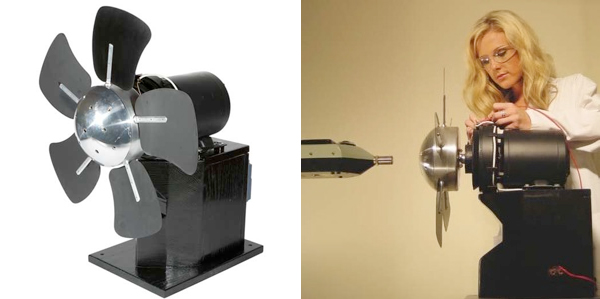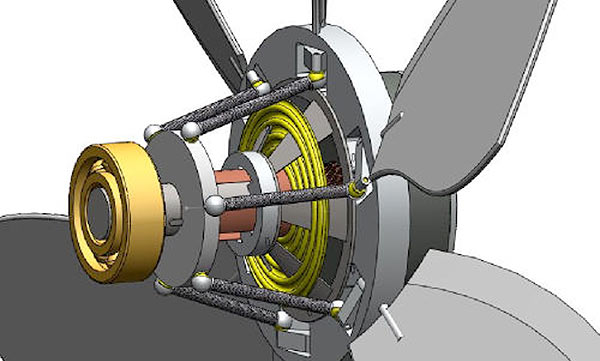How Low Can You Go?
I’ve written a lot about the high end of the sound spectrum. There are very important questions that need to be answered as we contemplate the value of high-definition audio and the realities of ultrasonics. Perhaps the most fundamental is whether human beings are capable of “perceiving” ultrasonic sounds. There is no disputing that musical instruments are capable of producing frequencies that eclipse the traditional range of human hearing. I look at spectragraphs of music recording all the time and see meaningful partials well above 20 kHz. And of course, I lament the fact that DSD and analog recordings have large amounts of uncorrelated noise in the ultrasonic region. Perhaps it doesn’t matter…but just maybe it does. I’m hoping to be the guy that does the rigorous double blind study proving this assertion one way or the other. I’m working on it.
So what would you say if we turned the question around and looked at the other end of the audio spectrum…the subsonic region between 1 Hz and 20 Hz? Are humans able to perceive sounds less than the traditional lower limit of 20 Hz? While I can’t honestly say that I know of instruments that produce frequencies in the subsonic range, I guess it’s possible. The largest organ pipes can produce sound that extend down to 16 Hz. And I have heard or been moved (literally) by music that uses those pipes but I doubt whether there are any traditional pop/rock musicians that are producing notes that low.
The world of electronic dance music is famous for the thundering pulse of the kick drum or an electronic sample of a kick drum. How low are those? Well, the clever beat makers and the engineers that work with them use something called a “sub octave” generator. This is device (analog or digital) that takes an incoming low frequency and produces an alternative output frequency one octave lower than the source input. Want to produce a track that has that extra car thumping punch…dial in your sub octave generator and pound out frequencies that dip below 20 Hz. You might chase your neighbors away with sounds that low but it’s all in the cause of better fidelity, right?
Figure 1 – A Rotary Woofer…the blades ride on the audio driver and turn/twist to establish the frequency.
Of course, we have to have speakers and amplifiers that are capable of moving air at those frequencies. That’s hard to do. It takes a lot of energy and very large speakers to make those sounds. The effort might not be worth it if we can’t hear those super low tones. But according to the folks that make “rotary woofers” at Eminent Technology, there are several recent studies (they didn’t list them) that have concluded that we can hear, “sounds down to a few Hertz”.
In the same paragraph they state, “Eminent Technology has already conducted one double blind study demonstrating that more than 91% of the participants could hear 16Hz, 8Hz, and 4Hz tones. Conventional audio systems with cone sub woofers are usually limited to about 20Hz. Compared to our hearing, conventional loudspeakers represent a high pass filter to sound.” How do they do it…using a radical technology called Rotary Woofers.
Here’s what a Rotary Woofer is:
“Each decade of sound recording and reproduction brings wider and wider bandwidth. Four years in development, the rotary woofer creates sound by rotating a set of blades. Sound represents very small changes in air pressure. As the blades rotate at a constant speed, the pitch follows the signal from the audio amplifier changing the pressure of the air just as a cone loudspeaker does. The blades have no pitch when there is no audio signal. The rotation of the blades grabs the air much more effectively than a cone and can enable high sound levels with a much more efficient conversion of energy as compared to a cone woofer. The rotary woofer has acoustic output equivalent of a very large number of conventional woofers many times its size at extremely low frequencies.”
I especially like the first line of this paragraph, “Each decade of sound recording and reproduction brings wider and wider bandwidth.” I take this to mean that we extend both ends of the usable musical range. Even if we cannot definitively say right now that humans can hear above 20 kHz…it seems that other end of the spectrum is opening up. I honestly don’t think it will be long before someone (perhaps even me) determines that ultrasonics do play an important role in the realism of a reproduced sound event…high-definition music.
If rotary woofers work at frequencies down to a few Hertz (although it would be very hard to miss something shaking the whole room unlike ultrasonics that might cause your dog discomfort), then it’s likely that ultrasonics play a roll too.
Let’s keep our minds open to the possibility that “wider bandwidth” benefits the fidelity of our recordings…even if our scientific instrumentation hasn’t figured out exactly how our bodies do it.


